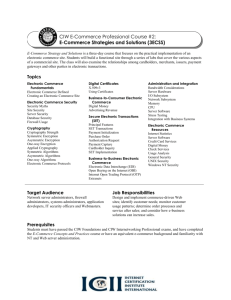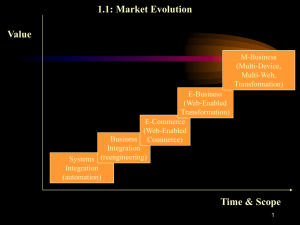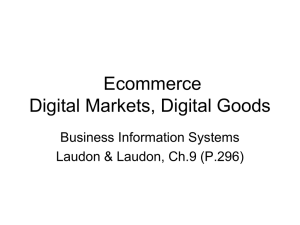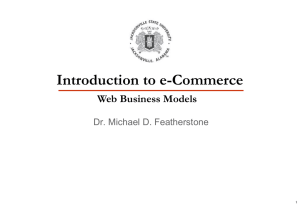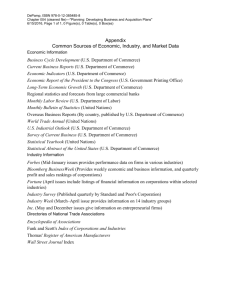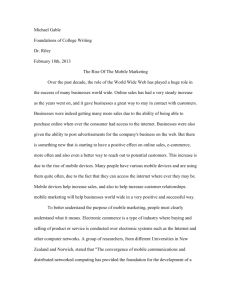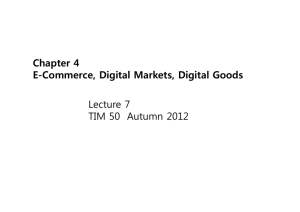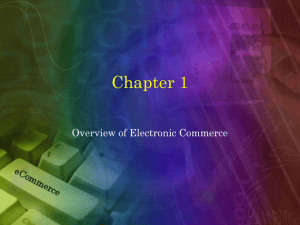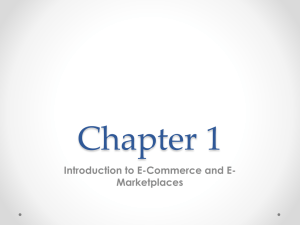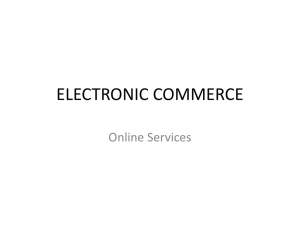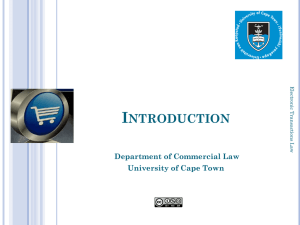software infrastructure
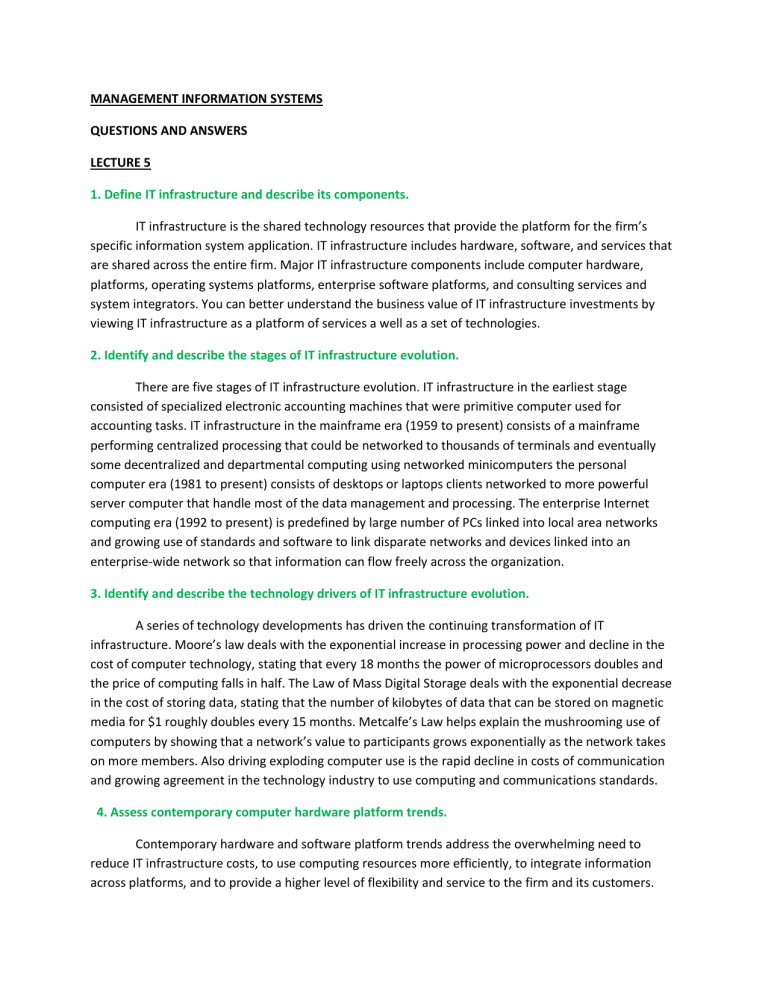
MANAGEMENT INFORMATION SYSTEMS
QUESTIONS AND ANSWERS
LECTURE 5
1. Define IT infrastructure and describe its components.
IT infrastructure is the shared technology resources that provide the platform for the firm’s specific information system application. IT infrastructure includes hardware, software, and services that are shared across the entire firm. Major IT infrastructure components include computer hardware, platforms, operating systems platforms, enterprise software platforms, and consulting services and system integrators. You can better understand the business value of IT infrastructure investments by viewing IT infrastructure as a platform of services a well as a set of technologies.
2. Identify and describe the stages of IT infrastructure evolution.
There are five stages of IT infrastructure evolution. IT infrastructure in the earliest stage consisted of specialized electronic accounting machines that were primitive computer used for accounting tasks. IT infrastructure in the mainframe era (1959 to present) consists of a mainframe performing centralized processing that could be networked to thousands of terminals and eventually some decentralized and departmental computing using networked minicomputers the personal computer era (1981 to present) consists of desktops or laptops clients networked to more powerful server computer that handle most of the data management and processing. The enterprise Internet computing era (1992 to present) is predefined by large number of PCs linked into local area networks and growing use of standards and software to link disparate networks and devices linked into an enterprise-wide network so that information can flow freely across the organization.
3. Identify and describe the technology drivers of IT infrastructure evolution.
A series of technology developments has driven the continuing transformation of IT infrastructure. Moore’s law deals with the exponential increase in processing power and decline in the cost of computer technology, stating that every 18 months the power of microprocessors doubles and the price of computing falls in half. The Law of Mass Digital Storage deals with the exponential decrease in the cost of storing data, stating that the number of kilobytes of data that can be stored on magnetic media for $1 roughly doubles every 15 months. Metcalfe’s Law helps explain the mushrooming use of computers by showing that a network’s value to participants grows exponentially as the network takes on more members. Also driving exploding computer use is the rapid decline in costs of communication and growing agreement in the technology industry to use computing and communications standards.
4. Assess contemporary computer hardware platform trends.
Contemporary hardware and software platform trends address the overwhelming need to reduce IT infrastructure costs, to use computing resources more efficiently, to integrate information across platforms, and to provide a higher level of flexibility and service to the firm and its customers.
The integration of computing and telecommunications platforms, grid computing, edge computing, and on-demand computing demonstrate that, increasingly, computing is taking place over a network. Grid computing involves connecting geographically remote computers into a single network to create a computational grid that combines the computing power for all the computers on the network with which to attack large computing problems. Edge computing balances the processing load for web based applications by distributing parts of the web content, logic, and processing among multiple servers. Ondemand computing also depends on networks for firms to purchase additional processing power from large computer service firms and to have that power delivered when they need it over a network. In autonomic computing, computer systems have capabilities for automatically configuring and repairing themselves.
Virtualization organizes computing resources so that their use in not restricted by physical configuration or geographic location. Server virtualization enables companies to run more than one operating system at the same time. A multicore processor is an microprocessor to which two or more possessors have been attached for enhanced performance, reduced power consumption, and more efficient simultaneous processing of multiple tasks.
5 assess contemporary software platform trends.
Contemporary software platform trends include the growing use of Linux, open-source software, and Java software for enterprise integration, and software outsourcing. Open-source is produced and maintained by a global community of programmers and is downloadable for free. Linux is a powerful, resilient open-source operating system that can run on multiple hardware platforms and is u used widely to run web servers. Java is an operating system and hardware independent programming language that is the leading interactive programming environment for the web.
Software for enterprise integration includes enterprise applications and middleware such as enterprise application integration (EAI) software and web services. Unlike EAI software, Web services are loosely coupled software components based on open web standards that are not product specific and can work with any application software and operating system. They can be used as components of web based applications linking the systems of two different organizations or to linking the systems of two different organizations or to link disparate systems of a single company. Mashups are new software applications and services based on combining different online software applications using high-speed data networks, universal communication standards and open source code. Companies are purchasing their new software application from outside sources, including software packages, by outsourcing custom application development to an external vendor( that may be offshore), or by renting software services from an application service provider.
6. Evaluate the challenges of managing IT infrastructure and management solutions.
Major infrastructure challenges include dealing with infrastructure change, agreeing on infrastructure management and governance, and making wise infrastructure investments. Solution guidelines include using a competitive forces model to determine how much to spend on IT infrastructure and where to make strategic infrastructure investments, and establishing the total cost of ownership (TCO) of
information technology assets. The total cost of owning technology resources includes not only the original cost of computer hardware and software but also costs for hardware and software upgrades, maintenance, technical support, and training.
======================================================================
LECTURE 6
Achieving Operational Excellence and Customer Intimacy: Enterprise Applications
1.
Describe how enterprise systems achieve operational excellence by integrating and coordinating diverse functions and business processes in the firm.
Enterprise systems integrate the key business processes of a firm into a single software system so that information can flow seamlessly throughout the organization, improving coordination, efficiency, and decision making. Enterprise software is based on a suite of integrated software modules and a common central database. The database collects data from and feeds the data into numerous applications that can support nearly all of an organization’s internal business activities. When new information is entered by one process, the information is made available immediately to other business processes. Organizations implementing enterprise software would have to adopt the business processes embedded in the software and, if necessary, change their business processes to conform to those in the software.
Enterprise systems support organizational centralization by enforcing uniform data standards and business processes throughout the company and a single unified technology platform. The firm wide data generated by enterprise systems helps managers evaluate organizational performance. By integrating business processes in sales, production, finance, and logistics, the entire organization will more efficiently respond to customer requests for products or information, forecast new products, and deliver them as demand requires.
2.
Demonstrate how supply chain management systems coordinate planning, production, and logistics with suppliers.
Supply chain management systems automate the flow of information among members of the supply chain so they can use it to make better decisions about when and how much to purchase, produce, or ship. More accurate information from supply chain management systems reduces uncertainty and the impact of the bullwhip effect. The correct movement of information makes it possible to time orders, shipments, and production properly to minimize inventory levels and expedite deliveries to customers.
Supply chain management software includes software for supply chain planning and for supply chain execution. Supply chain planning systems enable the firm to generate demand forecasts for a product and to develop sourcing, manufacturing, and distribution plans. Supply chain execution systems manage the flow of products through the final stages of production, distribution, and delivery. Firms can use intranets to improve coordination among their internal supply chain processes, and they can use extranets to coordinate supply chain processes shared with their business partners. Internet technology
facilitates the management of global supply chains by providing the connectivity for organizations in different countries to share supply chain information. Improved communication among supply chain members also facilitates efficient customer response and movement toward a demand-driven model.
3.
Demonstrate how customer relationship management systems achieve customer intimacy by integrating all customer contact information and making it available throughout the firm
Customer relationship management (CRM) systems integrate and automate many customer-facing processes in sales, marketing, and customer service, providing an enterprise-wide view of customers.
These systems track all of the ways in which a company interacts with its customers and analyze these interaction to maximize customer lifetime value for the firm. CRM systems capture and integrate customer data from all over the organization, analyzing the data and distributing the results to customer-related systems and customer touch points across the enterprise. Companies can use this customer knowledge when they interact with customers to provide them with better service or to sell new products and services. These systems also identify profitable or nonprofit able customers or opportunities to reduce the churn rate.
The major customer relationship management software packages integrate customer-related processes in sales, marketing and customer service and provide capabilities for both operational CRM and analytical CRM. They often include modules for managing relationships management.
If they are properly implemented, CRM systems help firms increase customer satisfaction, reduce direct marketing costs, and lower costs for customer acquisition and retention. Information from
CRM systems increases sales revenue by identifying the most profitable customers and segments for focused marketing and cross-selling. Customer churn will be reduced as sales, service, and marketing better respond to customer needs.
4.
Assess the challenges pose by enterprise applications.
Enterprise applications are difficult to implement. They require extensive organizational change, large new software investments, and carful assessment of how these systems will enhance organizational performance. Enterprise applications create new interconnections among myriad business processes and data flows inside the firm (and in the case supply chain management systems, between the firms and its external supply chain partners). Enterprise applications cannot provide value if they are implemented atop flawed processes or if firms do not know how to use these systems to measure performance improvements. Employees require training to prepare for new procedures and roles. Attention to data management is essential.
5.
Describe how enterprise applications can be used in platforms for new cross-functional services.
Enterprise applications can serve as building blocks for new Cross-functional services for customers, suppliers, or business partners. Service platforms integrate data and processes from the various enterprise applications (customer relationship management, supply chain
management, and enterprise systems), as well as from disparate legacy applications to create new composite business processes. Application integration middleware or Web services tie various systems together. The new services are delivered through enterprise portals, which can integrate disparate applications so that information appears to be coming from a single source.
6.
Compare the principal payment systems for electronic commerce.
The principal electronic payment systems for electronic commerce are digital credit card payment systems, digital wallets, accumulated balance digital payment systems, stored value payment systems, digital cash, peer-to –peer payment systems, digital checking and electronic billing presentment and payment systems. Accumulated balance systems, stored value systems
(including smart cards), and digital cash are useful for small micropayments.
LECTURE 7
E-Commerce: Digital Markets, Digital Goods
1.
Describe the unique features of e-commerce, digital markets, and digital goods.
E-commerce involves digitally enabled commercial transactions between and among organization and individuals. There are seven unique features of e-commerce technology: E-commerce technology is ubiquitous, means that it is available just about everywhere a computer can connect to the internet it has global reach, permitting commercial transactions to cross cultural and national boundaries far more conveniently and cos effectively than is true in traditional commerce. It operates according to universal standards share by all nations around the world, whereas most traditional commerce technologies differ from one nation to the next. It permits personalization and customization: Merchants can target their marketing messages to specific individuals by adjusting the message to a person’s name, interests, and past purchases.
The internet has created a digital marketplace where millions of people are able to exchange massive amounts of information directly, instantly, and for free. Digital markets are said to be more
“transparent” than traditional markets. Information asymmetry is reduced. Digital markets are very flexible and efficient, with reduced searched and transaction cost, lower menu costs, and the ability to change prices dynamically based on market conditions. Digital markets provide many opportunities to sell directly to the consumer, bypassing intermediaries, such as distributors or retail outlets.
Digital goods are goods, such as music, video, software, newspapers, magazines, and books that can be delivered over a digital network. Once a digital product has been produced, the cost of delivering that product digitally is extremely low. New business models based on delivering digital goods are
challenging bookstores, publishers, music labels, and film studios that depend on delivery of traditional goods.
2 Analyze how internet technology has changed value proposition and business models.
The internet radically reduces the cost of creating, sending, and storing information while making that information more widely available. Information is not limited to traditional physical methods of delivery. This unbundling of information from traditional value chain channels is having a disruptive effect on old business models, and it is creating new business models. Some of the traditional channels for exchanging product information have become unnecessary or uneconomical, and business models based on the coupling of information have become unnecessary or uneconomical, and business models based on the coupling of information have become unnecessary or uneconomical, and business models based on the coupling of information with products and services may no longer be necessary.
The internet can help companies create and capture profits in new ways by adding extra value to existing products and services or by providing the foundation for new products and services. Many different business models for electronic commerce on the internet have emerged, including virtual storefronts, information brokers, transaction brokers, Net marketplaces, content providers, online services. Many different business models for electronic commerce on the internet have emerged, including virtual storefronts, information brokers, transaction brokers, net marketplaces, content providers, online service providers, virtual communities, and portals. Business models that take advantage of the internet’s capabilities for communication, community-building capabilities, and digital goods distribution have become especially prominent
3 Describe the various types of e-commerce and how e-commerce has changed consumer retailing and business-to-business transactions.
The three major types of electronic commerce are business –to-customer (B2C), business-tobusiness (B2B), and consumer-to-consumer (C2C). Another way of classifying electronic commerce transactions is in terms of the participant’s physical connections to the web. Conventional e-commerce transactions, which take place over wired networks, can be distinguished from mobile commerce, or mcommerce, which is the purchase of goods and services using handheld wireless devices.
The internet provides a universally available set of technologies for electronic commerce that can be used to create new channels for marketing, sales, and customer support and to eliminate intermediaries in by-and-sell transactions. Interactive capabilities on the web can be used to build closer relationships with customers in marketing and customer support. Firms can use various web personalizations. Technologies to deliver web pages with content geared to the specific interests of each user, including technologies that delver personalized information and ads through m-commerce channels. Companies can also reduce cost and improve customer service by using web sites, as well as email and even telephone access to customer serve representatives, to provide helpful information.
B2B e-commerce generates efficiencies by enabling companies to locate suppliers, solicit bids, place orders or use Net marketplaces or private industrial networks. Net marketplaces provide a single,
digital marketplace based on Internet technology for many buyers and sellers. Net marketplaces can be differentiated by whether they sell direct or indirect goods, support spot or long-term purchasing, or serve vertical or horizontal markets. Private industrial networks link a firm with its suppliers and other strategic business partners to develop highly efficient supply chains and to respond quickly to customer demands.
4. Evaluate the role of m-commerce in business and describe the most important m-commerce applications.
M-commerce uses the internet for purchasing goods and services as well as for transmitting messages using wireless mobile devices. It is especially well suited for location based applications, such as finding local hotel and restaurants, monitoring local traffic and weather, and providing personalized location based marketing. Mobile phones and handhelds are being used for mobile bill payment; banking; securities trading; transportation schedule updates; and downloads of digital content, such as music, games, and video clips. –commerce to 1represents a tiny fraction of all online purchases because wireless mobile devices can’t display merchandise very well. Mobile phones have tiny keyboards, small screens, and slow data transfer speed (9.6 to 14.4 Kbps). M-commerce will benefit from interoperable payment systems for wireless devices and faster wireless networks to support more data-rich communication.
